Project details
Skill
Cost
Estimated Time
Age Range: 7 and up
Open up a toy chest and a child’s imagination takes flight, especially if the chest itself is part of the fun. This toy chest looks like a barn, designed to make even a city dweller feel a little bit country. A bonus: With wheels on the bottom and special toy box lid supports, it’s easier than ever for kids to round up their toys when playtime is over.
You can make this chest in an afternoon with tools on hand and materials available at the home center. Kids can handle most of the work that includes measuring, nailing, sanding, and painting, while adults should do the sawing and clamping. Once the toy chest is put together, kids will be scrambling to fill it with their prized possessions.
Download a template for this project
Step 1: Toy Chest Overview
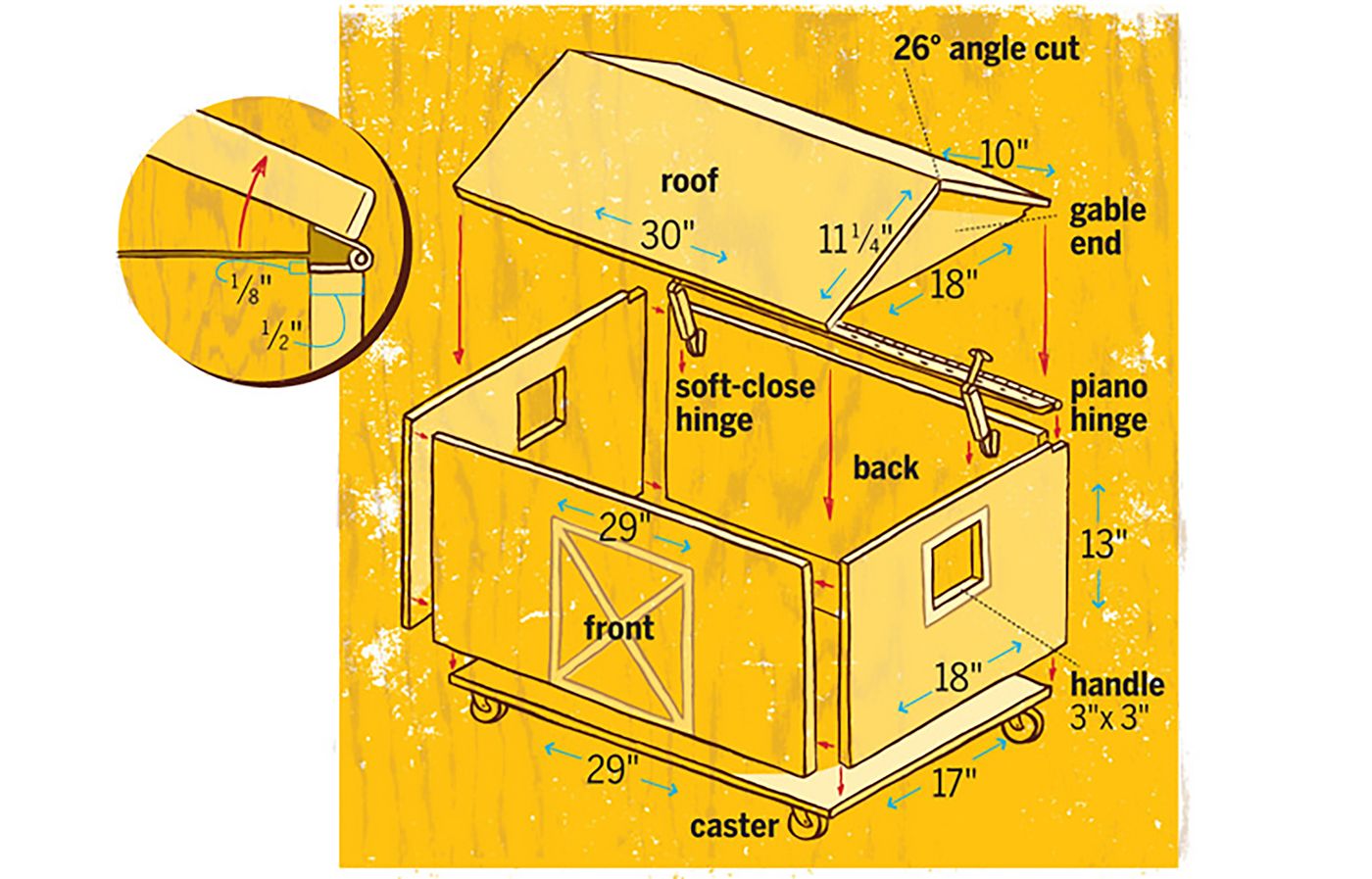
The toy chest is made from birch veneer plywood, with four sides that fit around a rectangular bottom. The roof fits over the two triangular gables at the ends. It’s easiest to build the roof by first clamping the gables to the box, then attaching the front and back roof pieces in place. That way you’re sure to end up with a lid that fits the box perfectly, with a pleasing overhang on the front edge that makes it easy to flip open.
For sturdiness, the roof is attached to the bottom box with a long continuous hinge all the way across one edge.
To accommodate the hinge, the back of the box and the roof are both slightly shorter than the corresponding front pieces, and the back ends of the gables are clipped off slightly.
For safety, there are also two toy box spring lid supports, which hold the weight of the roof and close softly with a gentle push of your child’s hands. These keep the box from slamming on little fingers.
Casters attached to the bottom of the chest make it easier to move around for play and cleanup.
Step 2: Lay out the Parts
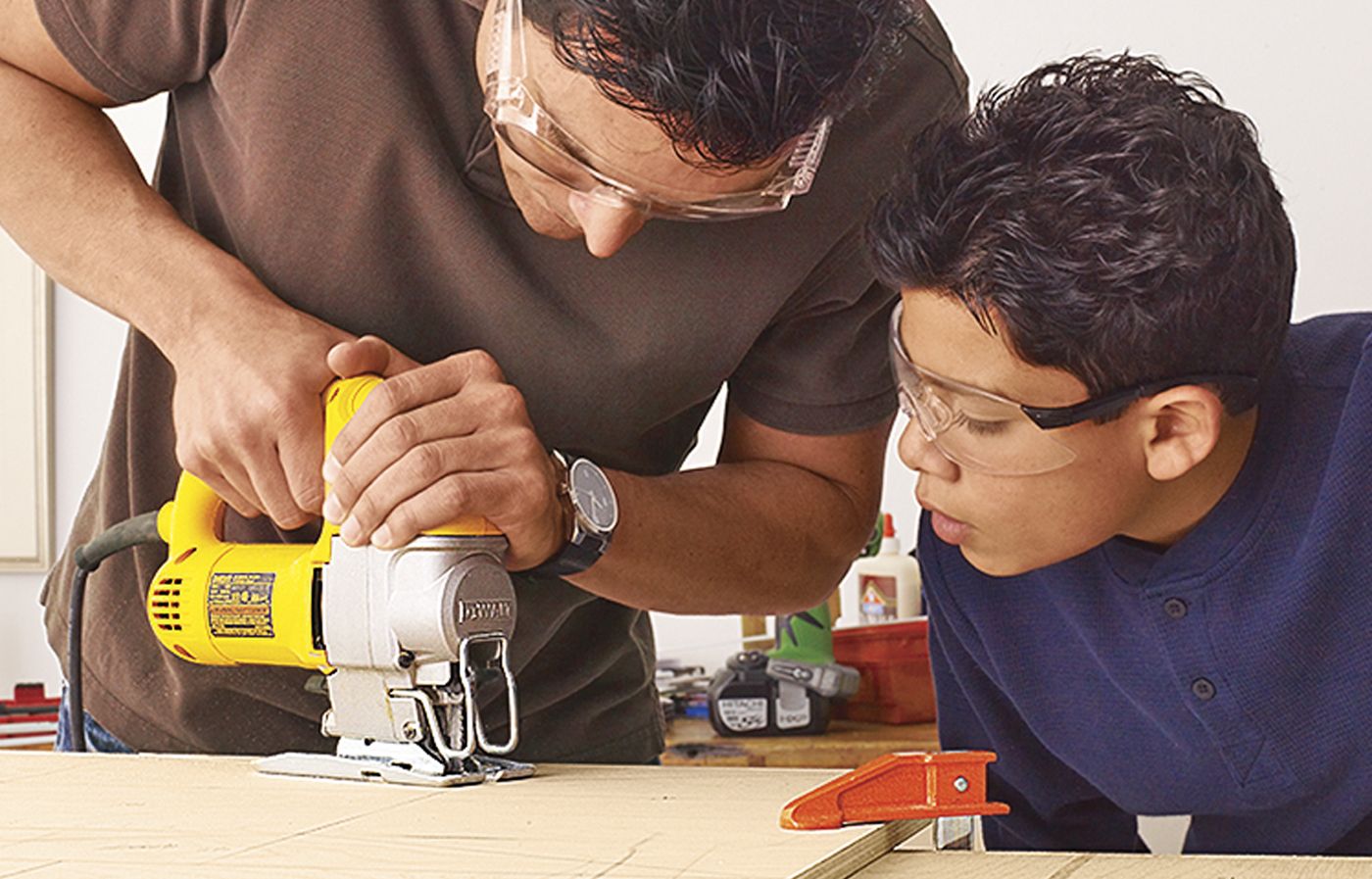
Using a tape measure and straightedge, lay out the chest’s nine individual pieces on a half sheet of ½-inch birch veneer plywood: front, back, two sides, bottom, two roof sections, and two gable ends, using the measurements in the illustration.
Clamp the plywood to a worktable. Using a jigsaw, cut the front, back, two sides, and the bottom pieces.
To make the roof pieces, set the saw blade at a 26-degree angle. Cut along one long edge of each roof piece at that angle; when mated together, these cuts will form the angle of the peak. Cut all the other edges with the blade set straight at 0 degrees.
On each side piece, mark out a 3-by-3-inch square for the handle. Drill ⅜-inch holes inside the four corners of each square to fit a jigsaw blade. Using a jigsaw, cut out both squares. Also cut a ⅛-by-½-inch notch on the top back corners.
Cut each gable out of a 4-by-18-inch piece of plywood. Clip ½ inch off the back corner to match the notch in the side pieces.
Step 3: Sand the Pieces
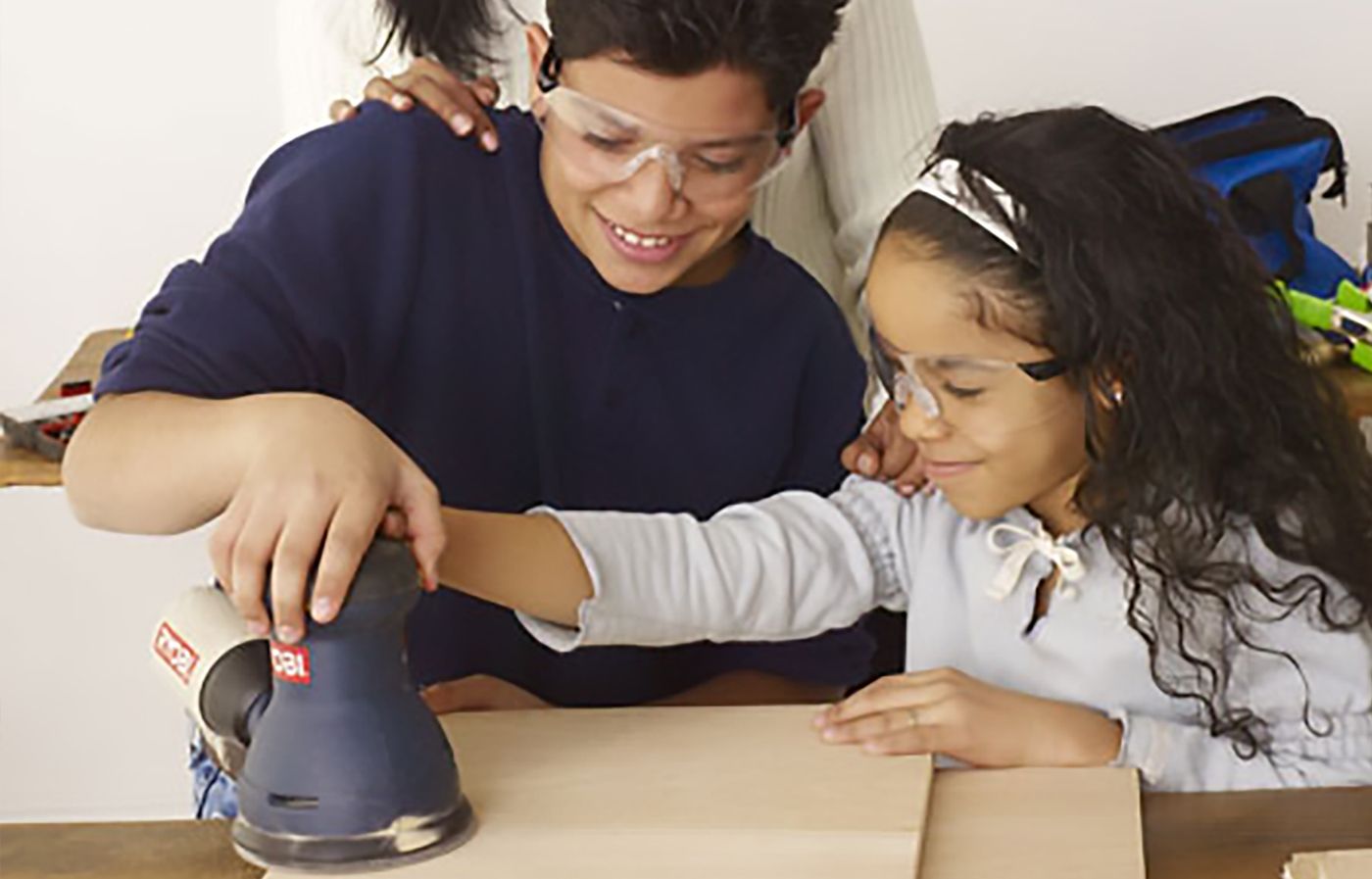
Clamp the pieces to the worktable and sand them with 120-grit sandpaper on a random-orbit sander until the wood is free of splinters. Make sure to hold on to the sander tightly because is can spin away from you.
Step 4: Glue the Pieces
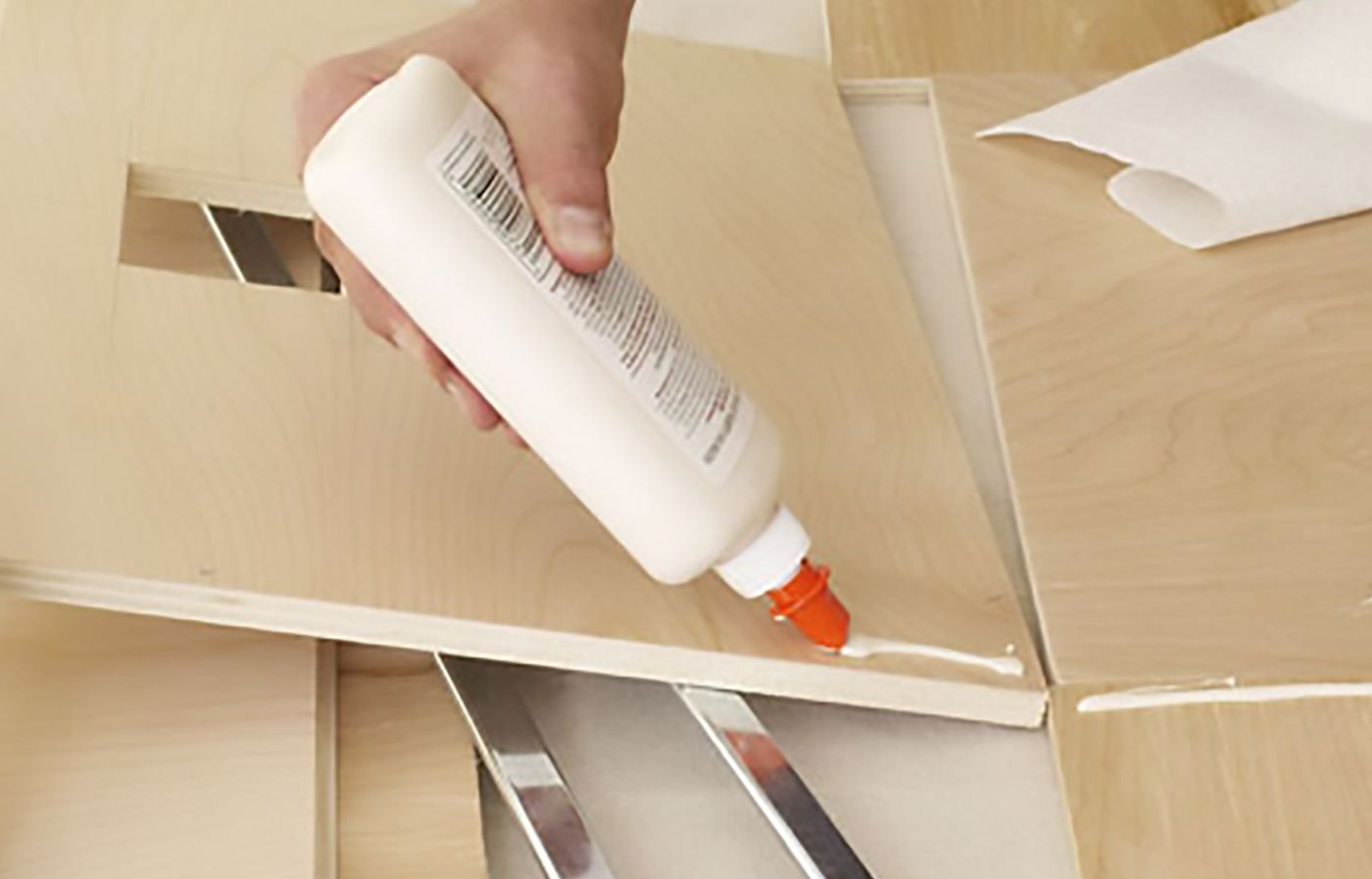
Put a thin bead of wood glue at the lower edges of the front, back, and two side pieces, then stand them up around the bottom piece. Let the sides overlap the front and back and make sure their notched corners line up with the back.
Step 5: Clamp the Box
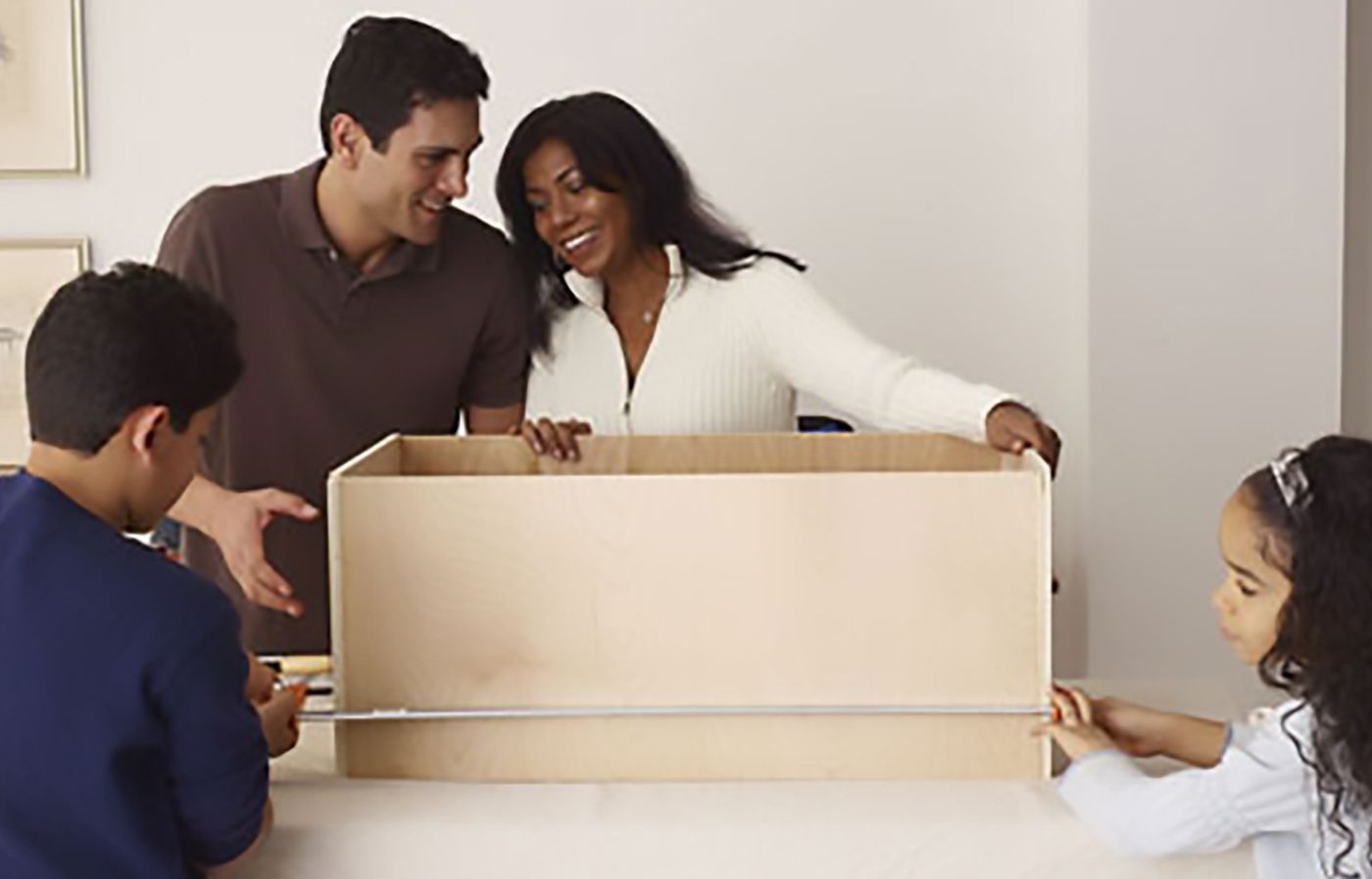
Hold the box together with bar clamps. Use a damp rag to wipe up any glue that squeezes out.
Step 6: Nail the Box Together
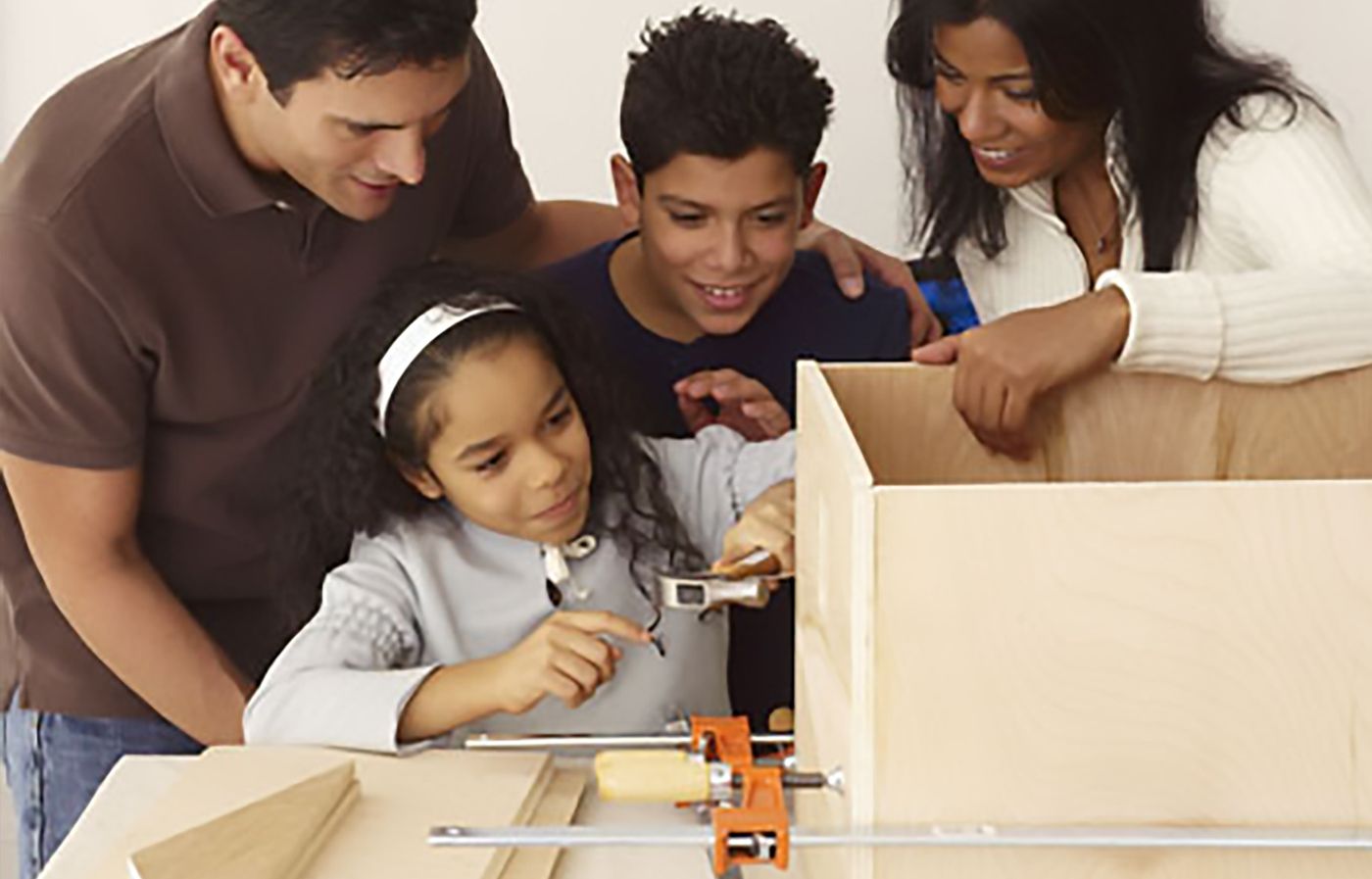
Nail along all the edges—sides as well as bottom—with 4d finish nails every 3 to 4 inches. Using a nailset, sink all the nails below the surface. Fill the holes with wood putty.
Step 7: Build the Roof
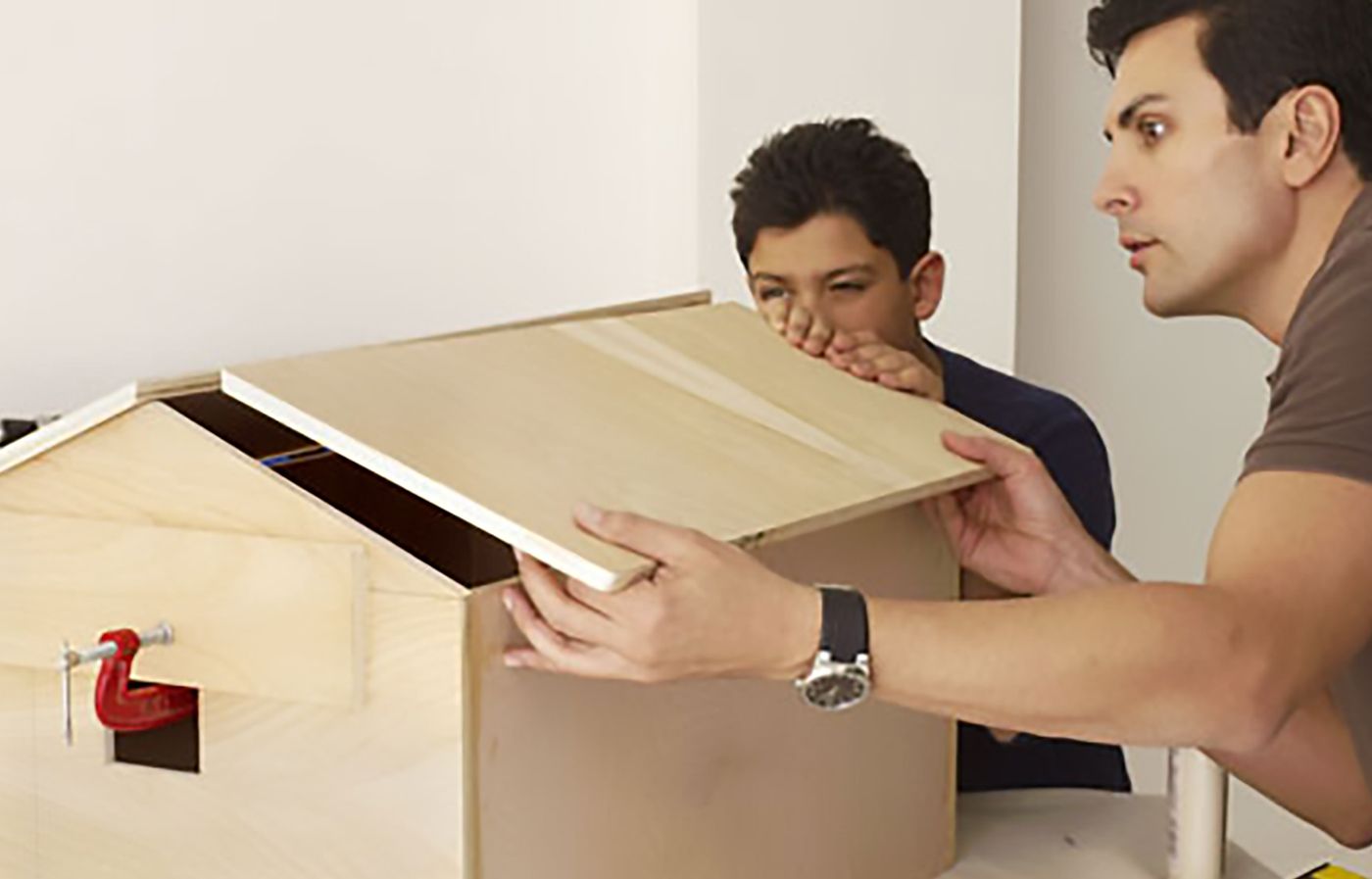
Stand the triangular gable ends on edge with the cut-off corners to the back, and clamp them in place on top of each side of the bottom box. Use pieces of scrap wood to bridge the seam, and brace them so that they stay vertical. Be sure not to glue or nail these gable ends down—they are meant to be the forms on which the roof is built, and assembling the pieces in place on the box will ensure that the roof ends up straight.
Glue and nail the shorter roof section onto the gable ends, aligning it so that the angled edge is centered over the peak of the gables and the back edge is even with the back of the box. It should be perfectly centered at the top but overhang the cut-off corner of each gable by about ½ inch.
Position the front of the roof to meet up with the back so that the angled edges form a tight peak. The front of the roof should overhang the front of the box.
Step 8: Nail the Roof Together
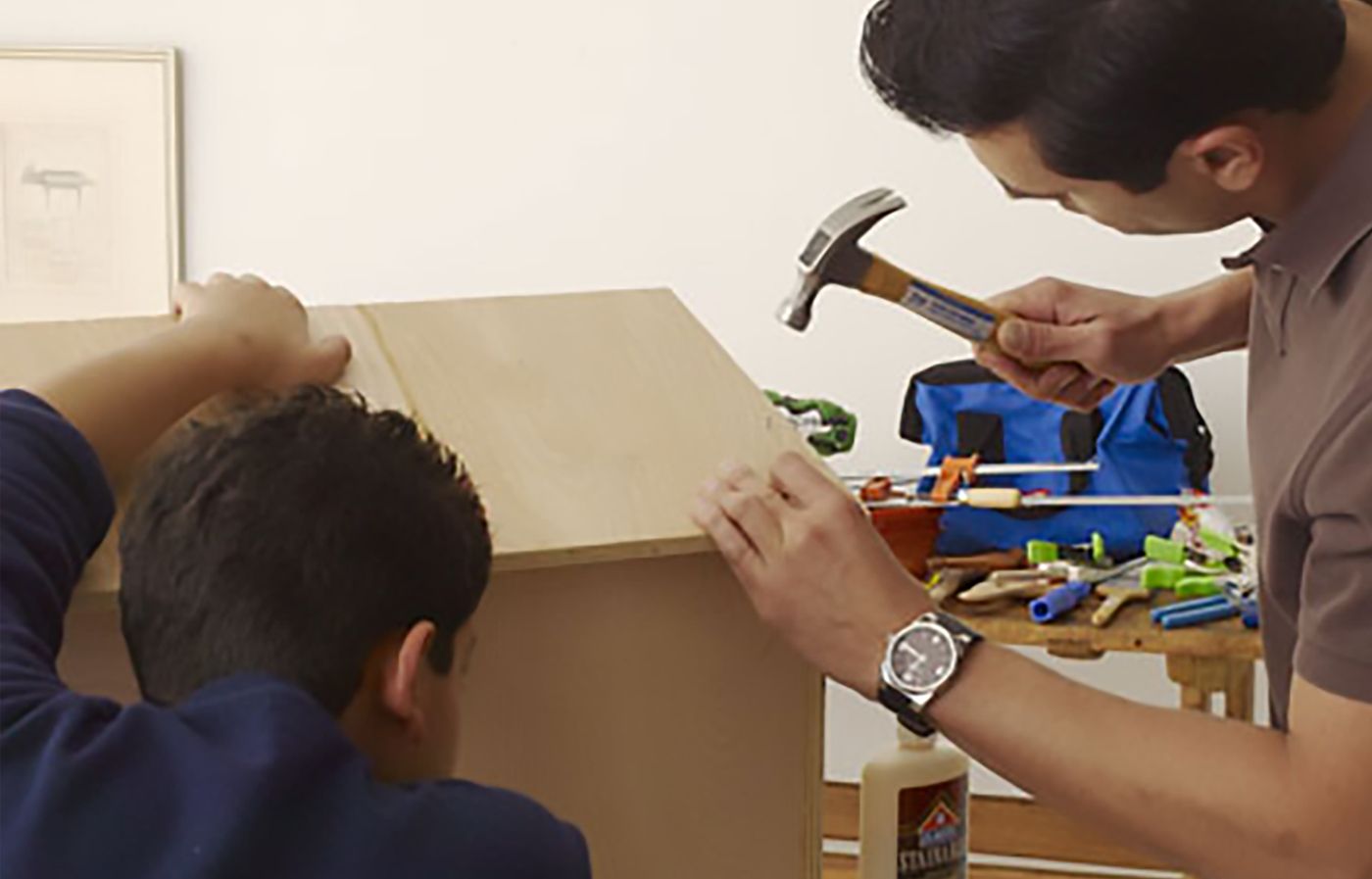
Glue and nail the front section of the roof onto the gable ends, making sure the whole roof assembly looks centered, with a ½-inch overhang on the gable ends.
Set all the nails below the surface, and fill the holes with wood putty.
Step 9: Paint the Toy Chest
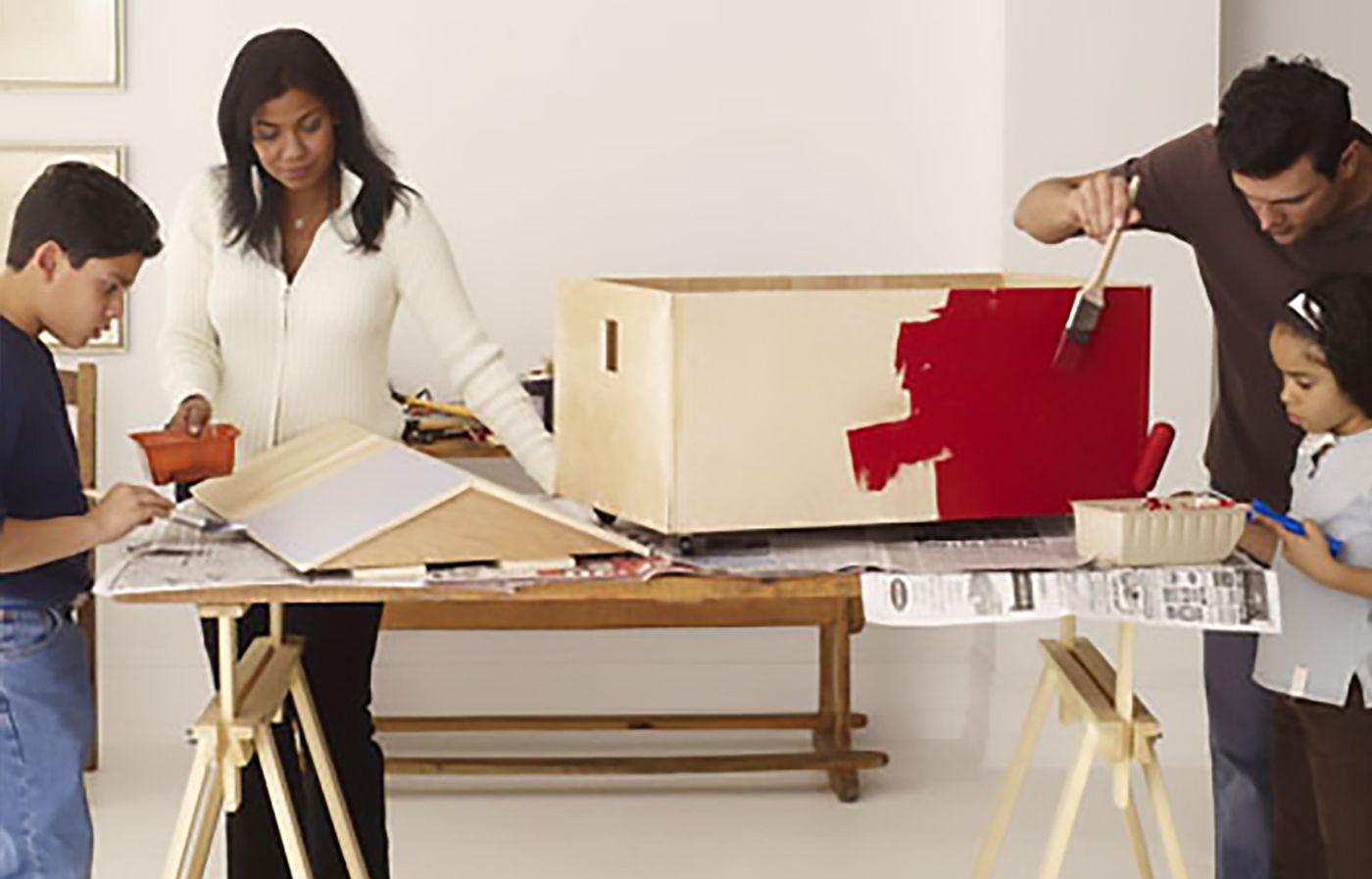
Once the wood putty is dry, sand it smooth with 120-grit sandpaper. Turn the box over and mount the casters to the four corners.
Using rollers and brushes, paint the barn roof silver and the base red. Let it dry.
Mark off the front door, corners, and frames around the handles with painter’s tape, then paint them white.
Step 10: Put the Roof on with Hinges
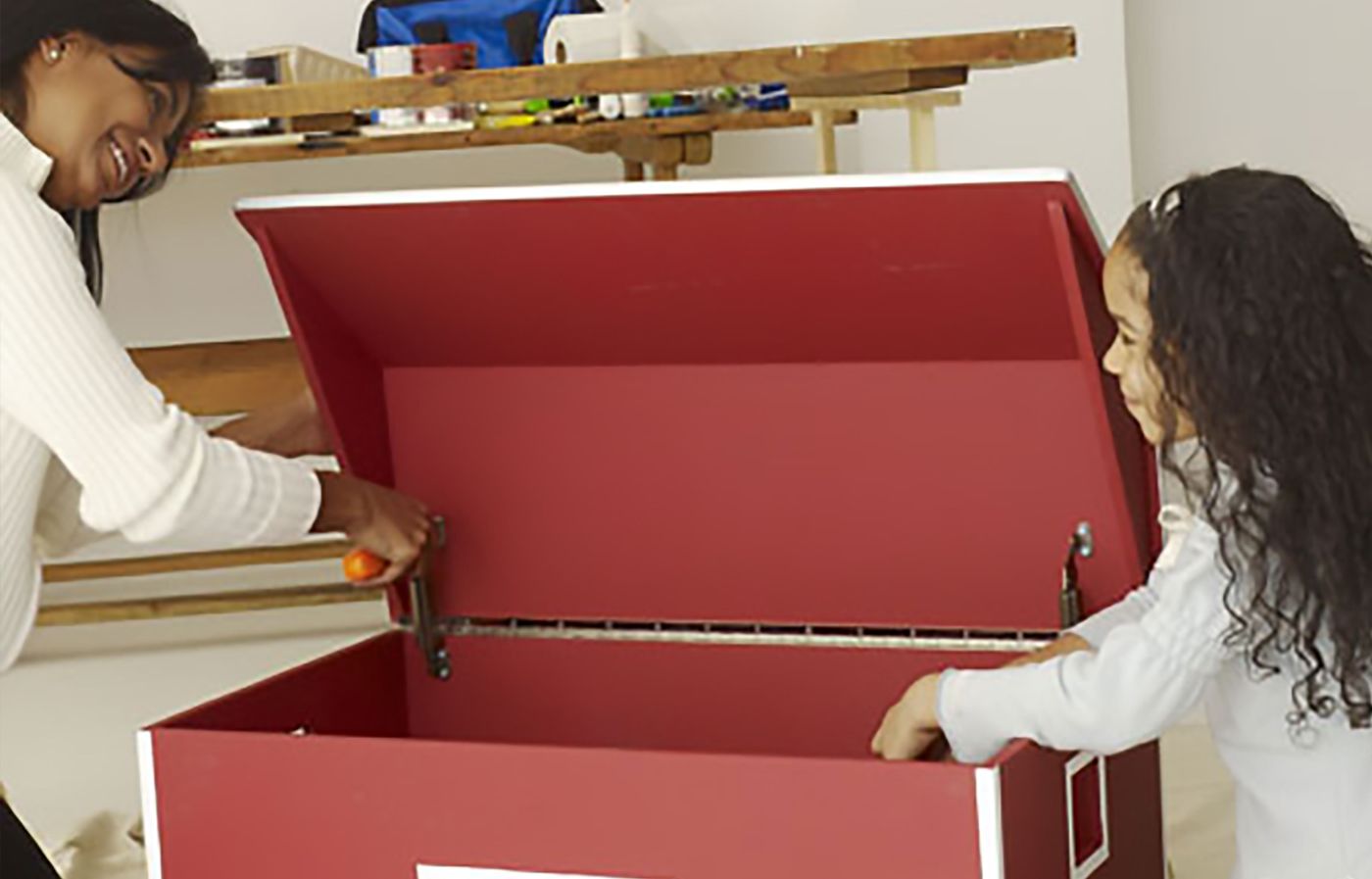
Line up the continuous hinge on the top back edge of the box. Make small divots at each screw hole along the back of the box with a nail.
Using a drill/driver, screw the continuous hinge to the box. Then screw the hinge to the roof.
Attach the right and left lid supports according to the manufacturer’s instructions.
Now fill your toy chest with your favorite toys!
Tools
 Tape measure
Tape measure Combination square
Combination square Straight edge
Straight edge Safety glasses
Safety glasses Jigsaw
Jigsaw Random orbit sander
Random orbit sander bar clamps – 36-in.
bar clamps – 36-in. Screwdriver
Screwdriver Drill/driver
Drill/driver drill bit – 3/8-inch
drill bit – 3/8-inch Putty knife
Putty knife Small paint roller
Small paint roller Paint brushes
Paint brushes Hammer
Hammer Nailset
Nailset















